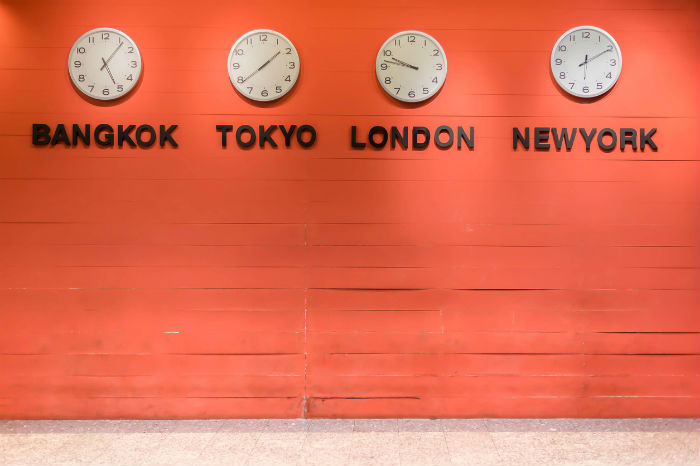Remote working is no longer a remote concept. A study of UK employees found that as many as 93% work from home at least some of the time,[i] while in the States, 37% of employees describe themselves as fulltime telecommuters, having no fixed working abode.[ii]
And the trend – enabled by technology, and driven, in part, by employee demand for greater flexibility – is set to continue: in a survey of business leaders, 34% predicted that by 2020, almost half their workforces will work outside a centralised location.[iii]
It’s good news for cost-cutting organisations. And concerns that a remote worker is an under-performing one appear unfounded – 98% of non office-based employees say their productivity is actually enhanced by flexible work options.[iv]
That said, disparate teams, particularly those straddling borders, present a challenge to the line manager. How do you create a team culture when your direct reports operate out of multiple time zones? How do you stay on top of progress and give timely feedback when your right-hand person hot desks at the far end of the country? And how do you health check your long distance relationship to ward off issues before things turn sour?
Radical Candor co-founder Russ Laraway recalls in his podcast on remote working how he ran into hot water when he headed up a large, senior and globally distributed team at Double Click, shortly after its acquisition by Google.
From his California base he scheduled regular calls with his number two, who operated out of the New York office. They used the allocated time to hold informal catch ups around what was going on. But – perhaps in a bid to avoid testing his employee while the relationship was fledging – Laraway failed to really challenge. Told everything was fine, he convinced himself that the project was running smoothly. But when Laraway’s own boss made a trip to NYC, he reported that the project was in chaos – there was a total disconnect between Laraway’s remote perceptions and the reality of daily life on the ground.
The lesson for Laraway was that distant managers must provide every bit as much challenge to their delegates as they would if they shared desk space, asking for evidence, and probing for details where instincts flag up there could be a problem. To tackle issues because you’ve let things slide, to use Laraway’s metaphor, is to end up needing something “more like a root canal, because I hadn’t been doing the brushing and flossing”.
There’s a fine line to tread, however, between challenging and micromanaging. Those working in remote offices need as much flexibility, independence and leeway as those you sit next to, so avoid slipping into overbearing boss mode.
“Focus on outcomes,” the leadership team at ghSMART, where 80% of work is done by remote employees, writes in a case study for Harvard Business Review. “After spending as much effort as we do in bringing the right people into the firm, it only makes sense to set them free.”
To do this, the line manager must set crystal clear expectations. “We tell our new teammates exactly what outcomes matter to us, and reward them for achieving and exceeding those outcomes. Once clear, consistent outcomes are set, management conversations shift from exercises in delegation to problem-solving sessions. Less micromanagement leads to more choice, decision making, freedom, and accountability at the individual level.”
If you get the opportunity for in-person catch ups, budget allowing, take along other team members who could benefit from a work-trip experience or the chance to build rapport with remote colleagues. But if you see international or even regional travel as more a punishment than a perk, there are clever ways around setting yourself up for a jetlag-free work life.
“I feel more connected with you than any other leader I’ve worked with,” were the words a Japanese delegate shared with US-based Kim Scott, former executive at Google and Apple, and co-founder of the Radical Candor podcast. The compliment was unexpected because Scott had made far fewer Asia trips that some of her predecessors. And it stemmed, she discovered, from a tweak she’d made to her working hours. For just one week per quarter, she worked from 3pm until midnight, meaning she was online and available while her Asia Pacific colleagues were at their desks.
“Sucking up [the late nights] was really important to the team and to me – it meant I didn’t have to travel quite as much,” she says.
She also ensured that communication between visits wasn’t consigned only to scheduled 1-2-1s, being disciplined about talking to direct reports two or three times a week over video calls rather than phone. These informal chats created opportunities to begin conversations with the kind of impromptu, getting-to-know you openers that are the norm between same-building co-workers, and foster familiarity and camaraderie.
“With frequent, short conversations you begin to develop an intuition for what’s going on with the person, with their moods. Are they agitated today? Then you can ask why and then you can understand if it’s something that’s happening at home, or if they’re frustrated by something you’re doing, or they’re frustrated with something else at work that you can impact.”
Giving or receiving feedback can become stilted and awkward if it’s always saved for formal, scheduled conferences, so quick check-ins can also go a long way to fostering a feedback culture. When giving or requesting feedback, video calls, where body language and human connection come to the fore, are much more effective than phone calls. And always remember that as with feedback you offer those you see daily, timeliness is of huge importance for remote workers. If you’ve a trip scheduled next month, don’t sit on important feedback for weeks – offer it up immediately via your next call, so that it’s as effective and relevant as possible, and doesn’t erode trust. “The purpose of criticism is to help people know what to do better. If you wait, you delay the benefit of the feedback,” says Scott.
Whatever your leadership or management style, you can maintain authenticity regardless of the culture you’re operating in. Managers can get hung up on how they should say or approach things with overseas teams, usually for fear of offending or creating misunderstandings. But it’s possible to remain true to yourself while being mindful of who you’re speaking to.
“Caring personally and challenging directly are something that need to happen in any human relationship no matter what country or culture on earth that relationship is happening in,” says Kim Scott. “But it’s also culturally relative… it’s measured at the listener’s ear not at your mouth. That also translates to culture [so it does need to be adjusted].”
Her co-broadcaster Russ Laraway cautions: “The much bigger puzzle to solve is what’s happening in an individual’s head. Only a tiny percentage of that is a function of their specific culture. We’re far more similar than we are different.”





